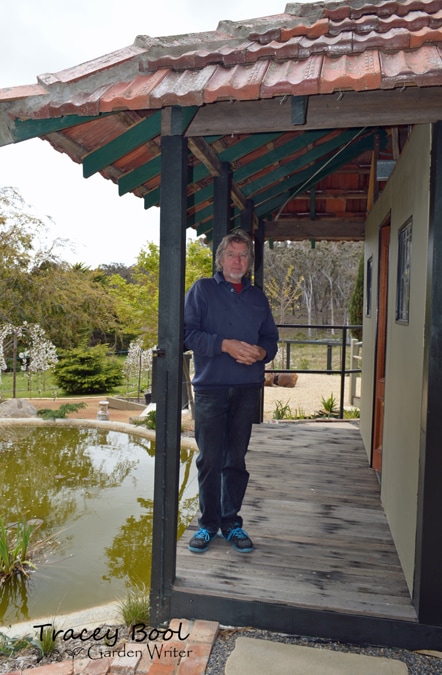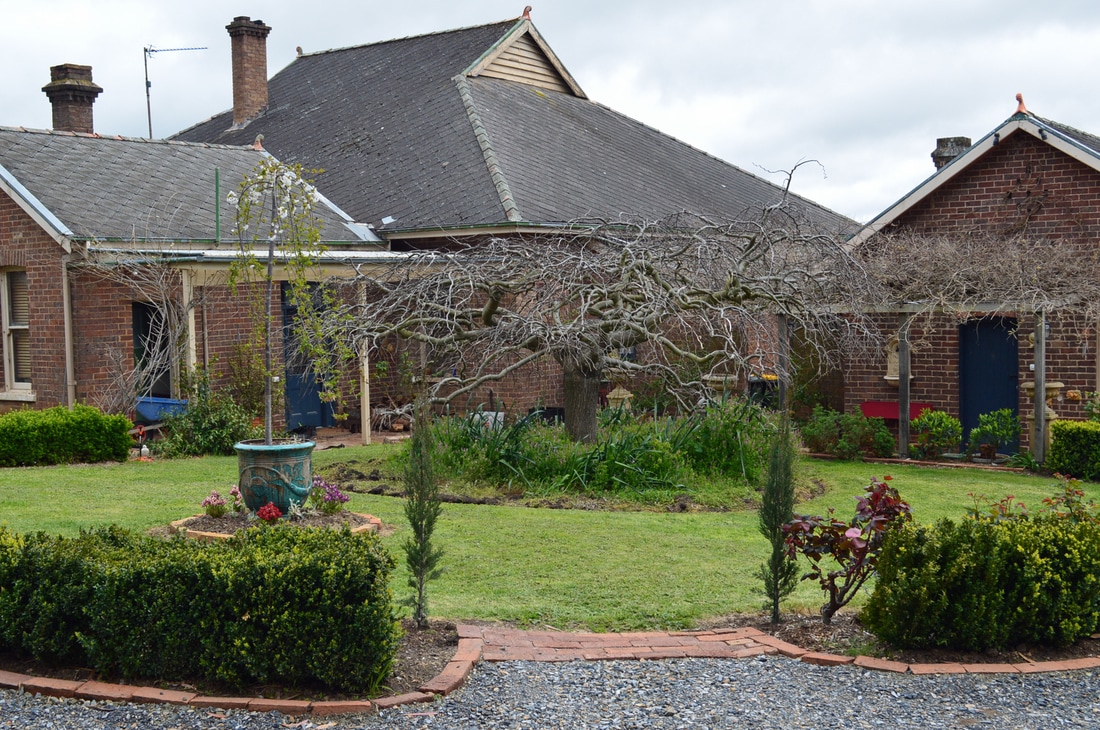|
History meets freethinking at Kentgrove in Goulburn NSW
(October 2016) Doug Rawlinson, current owner of Kentgrove Homestead and 14 hectares of the original surrounding landscape, started out as electronics technician where he ran a small business in Goulburn 35 years ago. As exceptional people such as Doug tend to do, he woke up one morning and decided he would like to honour his lifelong love for plants and landscapes by opening a retail plant nursery, which he did successfully for many years with Greenlife Nursery. Notably, Doug explained to me that his non-formal plant and farming education and background, frees him from traditional constraints, engendering him with a ‘go get ‘em’ attitude, where anything is possible. In 2006, Doug was able to purchase Kentgrove - his childhood home that his father managed in the 1950s - and is now spending his ‘retirement’ transforming this significant historic property to its former glory, whilst also utilising his extensive life experience and passion for conservation to set it up for modernity and beyond. Astoundingly, aside from intermittent help from lovely friends and the rare employment of a backhoe (a total of two days hire since purchasing Kentgrove), Doug carries out work on the property without assistance and on a mediocre budget. Kentgrove is heavily tied up in Goulburn’s history, having been owned by some significant and prominent settlers including not one but three Goulburn mayors, as well as Ernie Hyles, a powerful and prominent grazier of the region. Hyles also owned Canberra’s Uriarra Homestead during this period. Kentgrove was established in around 1840 as a fruit orchard with 30 000 trees at its peak. It housed its own cannery where it produced Argyle Jams, exported to England in the 1880s. After but not because of the depression in the 1930s, Kentgrove was run as a sizeable sheep station for many years. Two of several significant plant species at Kentgrove include a thriving 130 year old Euonymous japonica (spindle bush), and two majestic 140 year old Pinus pinea trees (stone pines), also in excellent health. Standout plants for me included a stunning 40 year old weeping Ulmus procera and a gorgeous collection of dwarf fruit trees, also in full flower. In January 2013, Doug constructed a 750 metre veggie, fruit, herb and sensory garden on the site of the old tennis court. It is housed under a permanent shade cloth structure to protect it from an undeniably changing climate and seasonal extremes, as well as resident rabbits and kangaroos. Doug said plant health and yield has significantly improved in his ‘Victorian Veggie Garden’ aka ‘Climate Change Garden’, since the addition of the structure. The garden is further protected from multiple planted windbreaks nearby. The raised garden beds have been constructed using recycled railway sleepers, and are watered with an efficient six station irrigation system complete with petrol pump backup. Doug has also constructed handy removable edges out of mesh and shade cloth for his potato crop. Soil in the veggie beds has predominately been ‘built’ using the ‘no dig’ method of gardening and utilising resources on site, as well as local product ‘Curleys’ compost, which Doug uses as a top dressing and organic fertiliser. All water used at Kentgrove is sourced from the property, with enough on standby to gravity feed all gardens for 6 months. Interestingly, the Kentgrove veggie garden is officially recognised as one of the region’s first climate change gardens because of this and other innovations. Unsurprisingly, Doug propagates most of his plants on site, mostly via cuttings and seed. He is also currently grafting remnant fruit trees from the second orchard for their preservation. He has a north facing glasshouse which utilises the warmth of a brick wall and includes a permanent raised bed for growing frost sensitive plants (such as tomatoes) out of season. It also has a retractable shade structure for keeping plants cool in the summer months. Recent garden additions include:
Doug is a strong advocate for upcycling and creative thinking, having an ‘if you can’t get rid of it, make it a feature’, mentality. One such lovely example of this ‘old is new’ ethos, is a water feature in the rainforest garden, unrecognisable as the claw foot bathtub it once was. Doug explained that after starting out as the bathtub of his childhood, it then became a cattle water trough before assuming its current function as home to many species of water plants. Doug has also secured a parcel of natural woodland on the property, which has been deemed environmentally significant as a wildlife corridor and home to vulnerable plants and animals such as Diamond Firetail and Flame Robin birds. With his parting words that history and life is about sharing stories whether humble, exceptional or otherwise, I left Kentgrove feeling inspired and grateful for the opportunity to share Doug’s beautiful story with others. Doug holds tours of the property for larger groups by appointment. For more: [email protected]. |





